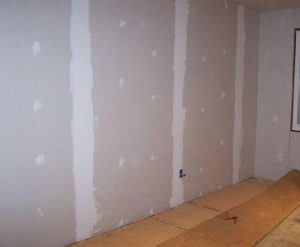
When installing drywall, construction companies and contractors use screws to secure the drywall panels to studs. Unfortunately, it’s not uncommon for these screws to come out. Even if a screw was originally installed deep into the drywall, it may loosen over time. And as the screw reverses direction, it can eventually pop out. Unless you’re familiar with this phenomenon, you might be wondering why screws pop out of drywall.
The 2 Main Reasons Screws Pop Out of Drywall
Screws typically pop out of drywall for one of two reasons: they were installed too deep, or the studs have expanded and contracted. If you drive a screw too deep through the drywall and into the stud, it may pop out. As you may know, drywall panels are covered in a thin layer of paper-like material. Driving a screw too deep means it will likely penetrate and break this paper-like covering. When this occurs, it makes the screw weaker, which may lead to it popping out.
Screws can also pop out of drywall from the constant expansion and contraction of studs. Being that studs are made of wood, they will expand and contract depending on their surrounding environment. In a humid environment, studs will absorb moisture, causing them to expand. In a dry environment, studs will release moisture, causing them to contract. Over time, the constant contraction and expansion of studs can cause screws to pop out.
How to Prevent Screws From Popping Out of Drywall
There are a few things you can do to prevent screws from popping out of drywall, one of which is to avoid driving screws too deep. The head of a screw should be completely exposed outside the surface paper covering the drywall panel. If the head penetrates the surface paper, the screw’s strength will be compromised, meaning it may loosen and pop out. With that said, you still need to drive screws deep enough so that the shank is completely in the drywall panel.
As previously mentioned, screws can pop out of drywall simply from the constant contraction and expansion of the studs in which they are driven. You can’t prevent studs from absorbing or releasing moisture, but you can control the degree to which they are affected by the moisture. Using a dehumidifier, for example, can help you control the amount of moisture vapor in the air. By setting it to 40% to 50% relative humidity, the air won’t be too humid or too dry. And because of the stable humidity, studs will expand and contract less.
